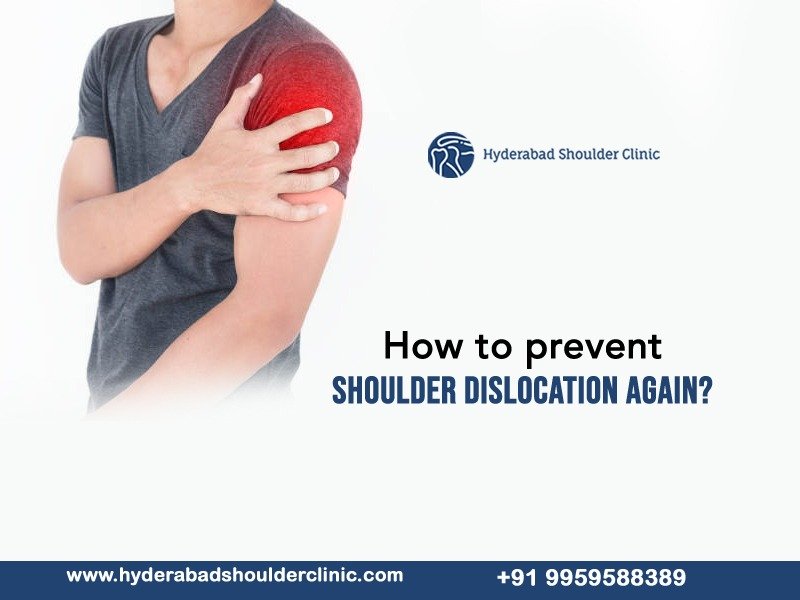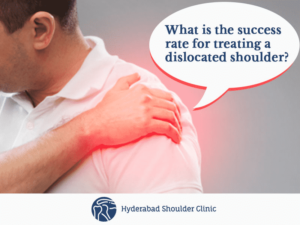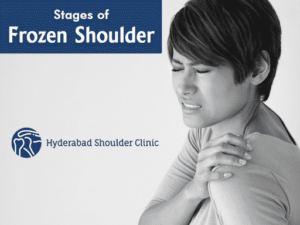Dislocation of the shoulder joint means that your shoulder means that the upper arm bone has come out of your shoulder joint. A person can be dislocated in the forward and downward dislocation and backward dislocation. A dislocated shoulder is very painful.
Anyone who has already dislocated their shoulder has a chase of dislocating it again. Hence, after recovering from the initial dislocation, it is essential to do rehabilitation exercises that will help you prevent future dislocation. One should maintain muscle strength and flexibility in order to prevent shoulder dislocations.
Understand shoulder dislocation
The shoulder is one of the most flexible joints in the body. It means that your upper arm bone (humerus) has moved out of your shoulder joint, as it is the most frequently dislocated major joint of your body. One dislocates their shoulder when the shoulder joint has been subjected to a significant force that separates the shoulder joint’s ball from the joint’s socket.
Types of shoulder dislocation are:
Forward and downward dislocation: One of the most common types of dislocations are forward and downward dislocations. If one falls from on your outstretched hand or on your shoulder itself, then these types of dislocations occur.
Backward dislocation: When there is a direct blow to the front of your shoulder or the violent twisting of your upper arm, then these types of dislocations occur.
Partial dislocation: When the head of your upper arm is partially out of your shoulder socket, it is called partial dislocation. In contrast to this, in a complete dislocation, the head of your upper arm is completely out of your shoulder socket.
What are shoulder dislocation treatments?
The shoulder dislocations depend on the following:
- Age at the time of injury
- Existing health condition and medical history
- Degree of severity of the injury
- Tolerance to medicines, procedures, or therapies
- As part of the treatment, the head of your upper arm bone is pushed back into your shoulder joint under the influence of anaesthesia.
- The shoulder is immobilized with a sling
- Rehabilitation exercises
- In cases where the above non-surgical treatments do not work, non-surgical measures are used to restore stability.
How to prevent shoulder re-dislocation?

What causes recurrent dislocation?
Recurrent dislocation is a condition when the shoulder dislocates multiple times.
Shoulder instability: Those patients with a tendency of subluxation are said to have shoulder instability. Shoulder instability is a result of:
- Traumatic dislocation, i.e., after a fall or injury to the shoulder
- Laxity of ligaments
- Gradual stretching of the joint capsule due to a repetitive injury, as in a throwing athlete.
The anatomical structure of the shoulder: If the anatomical structure of the joint is such that the head of the humerus (ball) has a wider circumference than the socket (glenoid), which is also shallow. Adjacent structures: The shoulder’s stability is therefore dependent on the adjoining soft tissues like the labrum, capsule and ligaments.
Bankart’s lesion: In forward dislocation, the ball (head) is forced out of the joint (socket). This type of dislocation disturbs the labrum, capsule and ligaments in the front of the shoulder. Hill-Sach’s lesion: The head of the humerus lies over the front edge of the glenoid (socket), and this causes an indentation on the ball.
Methods to prevent shoulder dislocation again?

In order to prevent recurrent shoulder dislocation, the course of action depends on the functional demands of the patient and the level of disability suffered by the patient.
Conservative methods: If the patient is prone to multiple dislocations, they should restrict their activities, including strenuous or active sports. One should be able to manage without multiple surgeries when they restrict activities that are likely to cause a dislocation or subluxation. They should also avoid placing the shoulder in a vulnerable position.
Surgery to stabilize the shoulder: Professional athletes are likely to need surgery to stabilize their unstable shoulder. The commonly used surgical options are:
- Arthroscopic Bankart repair (Key-hole surgery)
- Open Bankart repair
- Bony operations
Maintaining muscle strength and flexibility: After an initial dislocation, regular physical therapy may help prevent you from dislocating it in the future. The shoulder’s range of motion and physical strength increase, due to which the surrounding structures strengthen.
Your treatment program may include:
Range-of-motion exercises: Immediately after dislocation patient experiences spelling and pain. Due to wearing the sling for a long period, shoulder movement also gets restricted. Hence, your rehabilitation exercises will help you safely and effectively restore your shoulder’s full range of motion. The physical therapist might also suggest techniques to decrease shoulder pain.
Strengthening exercises: If the shoulder strength is not good, the shoulder joint will remain unstable. Shoulder strengthening exercises are crucial to reduce shoulder stability and a possible re-injury.
Joint and muscle retraining: The exercises will help your shoulder muscles to relearn how to respond to sudden forces. Such techniques will help you to return to your regular activities.
Sports-related training: if one is a professional sportsperson, one might need additional rehabilitation tailored to the demands your activities place on your shoulder. The physical therapist will design a program that takes all of these demands, along with your specific injury, into account. When people play sports with an overhead throw, your physical therapist will guide you to throw progressively.
We at Hyderabad Shoulder Clinic have years of experience in handling shoulder problems. We have also treated professional sportspeople suffering from repeated shoulder dislocations at the Hyderabad shoulder clinic. Please visit our website https://hyderabadshoulderclinic.com/ or contact us at +91 9959588389, shoulderandsportsclinic@gmail.com.





